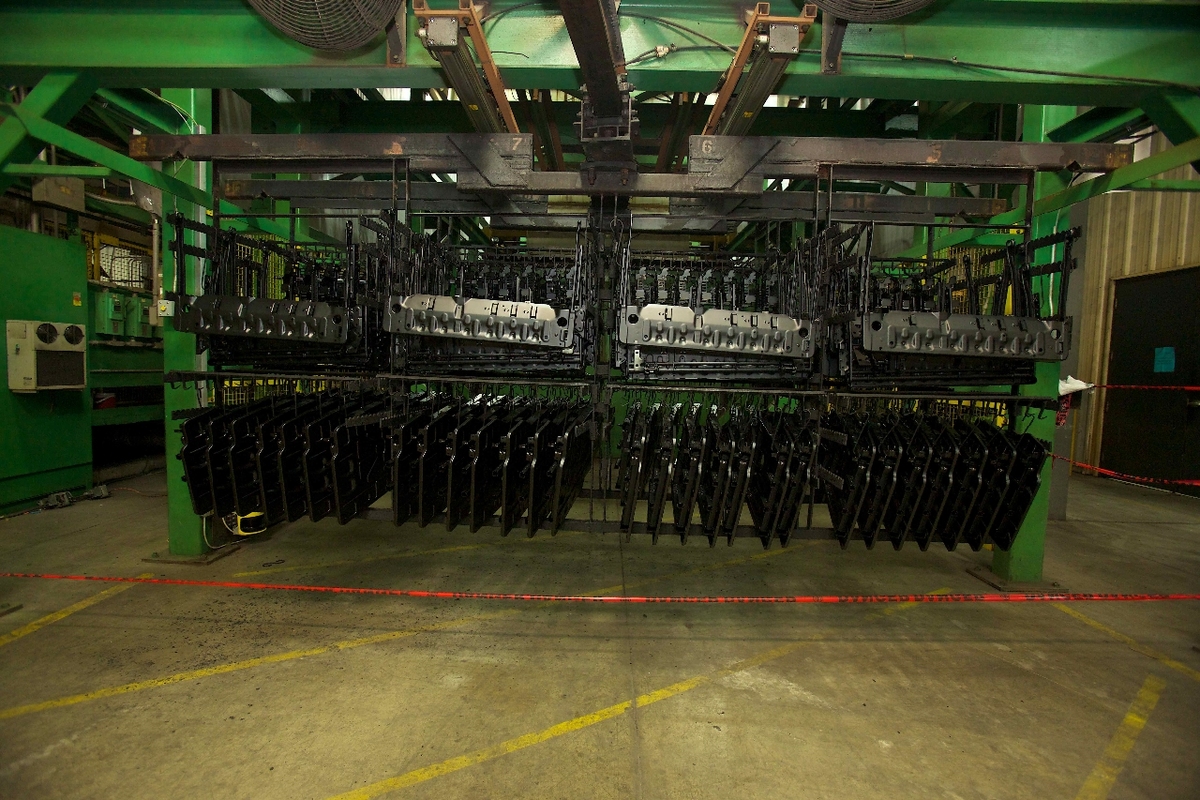A-coating and E-coating are two industrial metal coating technologies used to apply a rust and corrosion-proof coating to metal parts. Both are dip-coating processes that see wide use in the automotive and heavy machinery industries as a means of coating large components.

Despite these similarities, there are important differences to consider when selecting the correct industrial metal coating process.
What is A-Coating?
A-coating is a colloquial term for coating with Aquence, a Henkel® specialty coating product. Aquence was previously marketed as Autophoretic coating.
Aquence or A-coating is a waterborne poly coating that bonds to iron on contact. When a part made of ferrous material is dipped in a tank of liquid Aquence, the product bonds to the part with a chemical reaction. Next, manufacturers place the part in an oven to cure the coating.
A-coating has gained recognition in the automotive and heavy industrial manufacturing industries as a reliable metal coating technology. It has unlimited throwing power, and excellent corrosion and scratch resistance.
Aquence is also environmentally sustainable, containing no heavy metals and very few volatile organic compounds (VOCs). Any wastewater resulting from the A-coating process can be treated and disposed of in an environmentally-friendly way.
There are two types of Aquence coating available:
Aquence 866 leaves a matte-like finish and cures at low temperature, enabling manufacturers to coat full assemblies without affecting plastic or rubber bushings.
Aquence 930 is an epoxy acrylic coating with a semi-gloss appearance, ideal as Class B finish or primer coat.
Plastico is the only industrial metal coating company in Canada to offer A-coating in both Aquence 866 and Aquence 930 coatings.
What is E-Coating?
E-coating refers to electrophoretic painting or electrocoating, a metal coating technology developed to apply anti-corrosive coating.
The e-coating process involves immersing the part in a series of dip tanks, first to pre-treat and apply zinc phosphate and then to coat, clean, rinse, and condition it. When the part is dipped into the coating materials, the manufacturer activates an electrical current that passes through the tank using the part as an electrode. This electrical activity causes a layer of resin to adhere to the part, coating all surfaces exposed to the substance.
As with A-coating, a part coated with E-coating must be cured after application.
It is possible to control the thickness of the coating by adjusting the electrical current to the tank. A higher voltage will result in a thicker coating.
Differences Between A-Coating and E-Coating
While these metal coating technologies sound similar, the differences between A-coating and E-coating are significant.
A-coating bonds to metal using a chemical reaction, while E-coating bonds through the application of an electrical current.
A-coating equipment requires fewer dip stations and has a much smaller footprint than E-coating equipment. E-coating involves a lengthy pre-treatment process with multiple washing, cleaning, rinsing and conditioning stations.
Since it uses less equipment, the A-coating process consumes significantly less energy than E-coating.
While durable, E-coating is vulnerable to UV rays. A-coating is a durable poly coating that withstands UV.

